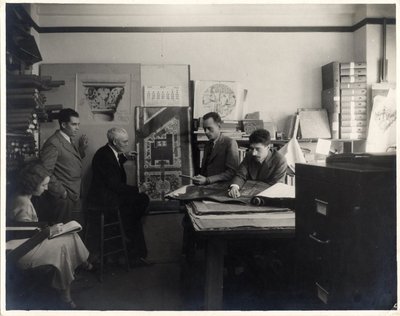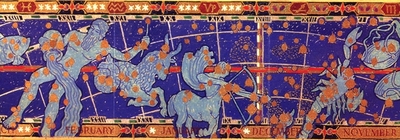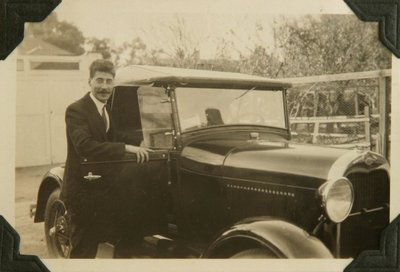Roger’s cordial relations with various Caltech students, staff and faculty eventually led to his inclusion in the One-Hundred-to-One Shot Club, a group that started with about a dozen members, mostly scientists, who worked within the fields of physics and astronomy. The club was begun by two men involved with the design of a 200-inch telescopic lens for the Palomar Observatory. Special annual meetings were held for a time on Palomar Mountain to view progress of the device and facility, beginning with the initial groundbreaking ceremony and onward until its completion. At these summer meetings the group would camp out under the trees and talk about astronomy and assorted sciences throughout the night. The name of the club was a reference to most topics discussed in the meetings, which focused on various theories or occurrences which were extremely unlikely to be proven or disproven.
In 1930 Cram & Ferguson were chosen to oversee another California construction project – this time the Doheny Memorial Library, a $1.1 million structure on the University of Southern California campus. Samuel Lunden was once again chosen to serve as the principal architect, and Roger contributed several items to the library. Among other details, he designed the sculpture and several beautiful glass mosaics that were placed over the main entryway of the library, for which he received the 1933 Honor Award from the Los Angeles Chapter of the American Institute of Architects.
In conjunction with the Doheny Memorial Library’s opening in 1932, Betty Hayward edited a typescript as a provision for the occasion. As an introduction to the text titled “On the Preservation of Books,” she wrote an illuminating and humorous entry which recounted various obstacles and achievements regarding the preservation of knowledge and precious texts throughout the ages of human history. In the text Betty focused primarily on the notion that “the souls of books are immortal, but their bodies are perishable.” Betty also edited a handbook for the library that contained vivid and detailed descriptions of the building and its works of art.



